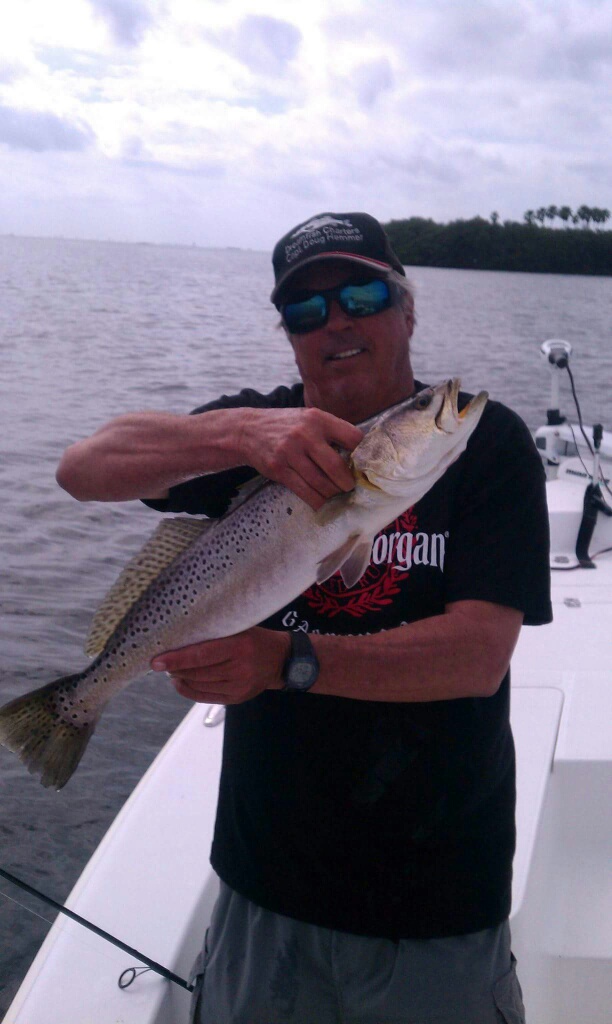Savvy anglers know those short 2- or 3-hour blocks of time, before and after typical summer storms, can be great times to fish.
By TERRY TOMALIN
Originally published Aug. 17, 2001
© St. Petersburg Times
TIERRA VERDE — When it comes to summer fishing, the weatherman doesn’t understand.
If he calls for storms, the sun will shine. If he says it will be calm, count on waves.
How’s a man to plan?
There was a time when you could pretty much count on a thunderstorm at 3o’clock, clear skies by 5 and a snook by 6.
But that was before global warming, El Nino, La Bamba and all the other curveballs Mother Nature kept tossing to keep fishermen on their toes.
All you can do is keep the boat gassed, the rods ready and the schedule flexible so when you get a chance, you are ready.
“This may sound crazy,” my friend said. “We should go fishing.”
The wind had been blowing for a week, the rain had turned the inshore waters to mud and the weather report said there was another low pressure system just around the corner.
“The tide is right,” he said. “The sky is supposed to clear. We might have a few hours before it starts raining again.”
Beach fishing for snook is fairly predictable this time of year. The fish feed with moving water, as long as they can see the bait.
But wind, waves and rain have a way of stirring things up. If the water gets too murky, you can drop a bait right in front of a snook’s snout and it won’t eat it.
Sometimes, all it takes is a few hours and a strong tide to get things going again. That is where patience pays off. Kick back with a cold drink and a good cigar and wait until the water clears.
Then fill your bait bucket, kick off your shoes and start walking … or shuffling (it’s stingray season) through the shallow water along the beach.
If you are lucky, you’ll see some shadows moving through the swash channel. Cast upcurrent and let your bait drift to the fish.
Don’t be surprised if the bait doesn’t get smacked the first time. Remember, the wind has been howling for days. The snook have been hunkered down, waiting for the coast to clear.
Give them a chance to wake up. After all, do you feel like wolfing down a big plate of ham and eggs when you roll out of bed?
No. So take that pinfish, the bigger the better, and toss it out there, again and again, until those snook realize breakfast is ready.
Fish can sense changes in barometric pressure. They feed most actively before and after foul weather.
Sure, every angler knows that the two best times to go fishing are before and after a hurricane, as long as you still have a boat.
But great anglers know that it is the small window of opportunity, those 2- or 3-hour blocks of time, before and after the typical summer storm, that pay big dividends.
Take this summer afternoon, for example:
At 2, I thought we had made a mistake.
“Be patient,” my friend said. “They’ll turn on.”
At 3, I wished we had packed a cooler.
“Don’t worry,” my friend said. “Just give them some time.”
But at 4, all hell broke loose.
The fish fed for 30 minutes, then as quickly as they started biting, they stopped. Just about that time, the wind began to blow. It started as a ripple on the surface, but by the time we weighed anchor, it was making waves.
“That is the way I like it,” my friend said. “We come out, take care of business, and then slip away as if we were never here.”
Local anglers ride the waves over Tampa Bay’s shipping channel in search of monster fish.
- The Neil Blog - March 23, 2024
- ++++++++++++++++++++++++++++++++++++++++++++++++++++++++++++++++++++++++++++++++++++++++++++++++++++++++++++++++++++++++++++++++++++++++++++++++++++++++++++++++++++++++++++++++++++++++++++++++++++++++++++++++++++++++++++++++++++++++++++++++++++++++++++++++++++++++++++++++++++++++++++++++++++++++++++++++ - June 25, 2023
- Nature Coast:William Toney - December 12, 2021











